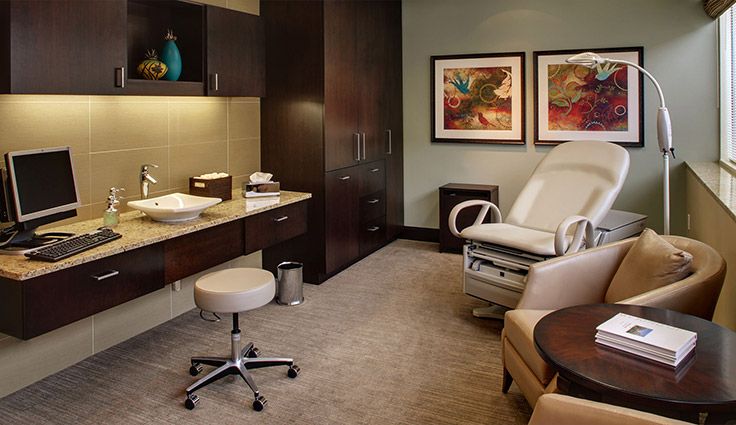The importance of medical office interior design cannot be overstated when it comes to patient comfort and well-being. A well-designed medical office interior goes beyond aesthetics; it plays a vital role in creating a supportive and calming environment for patients. From the moment they step through the door, patients should feel at ease and reassured by their surroundings. Let’s explore why medical office interior design is crucial for patient comfort:
- Reducing Anxiety and Stress: Medical environments can be inherently anxiety-inducing for patients. The sight of clinical equipment, the anticipation of medical procedures, and the fear of bad news can all contribute to heightened stress levels. However, a thoughtfully designed medical office interior can help alleviate some of these anxieties. Soft colors, comfortable seating areas, and soothing decor elements can create a calming atmosphere that puts patients at ease. By incorporating elements of biophilic design, such as natural light and greenery, medical office interiors can mimic elements of nature known to promote relaxation and reduce stress.
- Enhancing the Waiting Experience: The waiting room is often the first point of contact for patients, and its design can significantly impact their overall experience. Long wait times coupled with uncomfortable seating and sterile surroundings can exacerbate feelings of frustration and discomfort. A well-designed waiting area, on the other hand, can transform the waiting experience into a more pleasant one. Comfortable seating arrangements, engaging reading materials, and access to amenities like refreshments or Wi-Fi can help pass the time more quickly and comfortably for patients.
- Promoting Healing and Recovery: The physical environment plays a crucial role in promoting healing and recovery for patients. Medical office interior design can create a healing environment that supports patients’ physical and emotional well-being. Thoughtful design choices, such as ergonomic furniture, adjustable lighting, and soundproofing materials, can enhance patient comfort and facilitate the healing process. By creating a space that feels safe, welcoming, and supportive, medical office interiors can positively impact patients’ recovery outcomes.
- Building Trust and Confidence: The design of a medical office sends a powerful message to patients about the quality of care they can expect to receive. A clean, well-maintained, and thoughtfully designed environment conveys professionalism, competence, and attention to detail. Patients are more likely to trust healthcare providers and feel confident in their abilities when they are greeted by a welcoming and organized space. Medical office interior design plays a crucial role in building trust and confidence in patients, ultimately contributing to positive patient-provider relationships and better health outcomes.
- Improving Accessibility and Inclusivity: Medical office interior design should prioritize accessibility and inclusivity to ensure that all patients feel welcome and accommodated. This includes considerations such as wheelchair accessibility, clear signage, and comfortable seating options for patients with mobility challenges. By designing with inclusivity in mind, medical offices can create environments that are welcoming and accessible to patients of all ages, abilities, and backgrounds.
In conclusion, medical office interior design plays a crucial role in enhancing patient comfort, well-being, and overall satisfaction with their healthcare experience. By creating a calming atmosphere, enhancing the waiting experience, promoting healing and recovery, building trust and confidence, and prioritizing accessibility and inclusivity, medical offices can create environments that support patients’ physical, emotional, and psychological needs. Investing in thoughtful and patient-centered interior design is not only beneficial for patients but also contributes to the success and reputation of healthcare providers.




